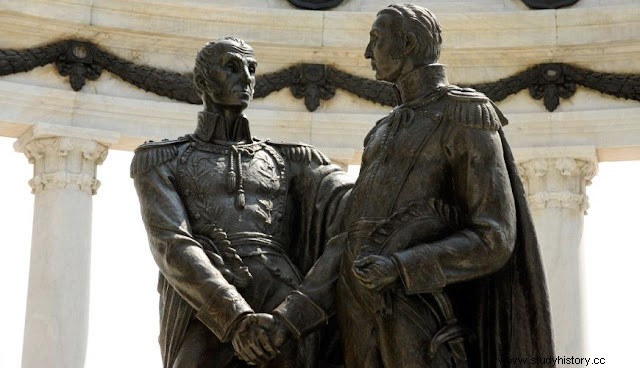
The Postcolonial Creole Predicament The Ibero-American republics were not a political derivative of the struggles of a middle class against the ruling aristocratic classes. Instead, they were states created from above by colonial landowning elites seeking to free themselves from a decaying metropolis, whose representatives continued to monopolize political and economic privileges in the colonies. But disgruntled Creole elites were at the same time spurred on to independence "by fear of 'lower class' mobilizations, namely Indian or black slave uprisings." In short, "the perennial contradiction of the (Creole) position was to always be caught between the intrusive authority of the European metropolis and the explosive discontent of the native masses."
The fissures of the Creole nation For Bolívar and his Bonapartist republicanism with which he trafficked, "America had no useful history," be it European or Indian, colonial or pre-colonial. It happened that she was on one side "separated both culturally and geographically from Europe", and "inhabited by peoples whose cultural heritage had been obliterated by the conquest" on the other. For Bolívar, "no Indian could be the bearer of a significant past or the spiritual leader of a future republican, no matter how fictitious”. Bolívar generally thought of the Indians, when he did, as an essentially docile and non-politicizable mass that "only wants rest and solitude." Bolívar seems to have viewed what remained of Peru's Indian nobility with similar contempt. She had been an accomplice of the “despotic” Hispanic rule.
The post-colonial Andean predicament But how could the "Peruvian" be read by the "Indian" majority? The analysis of the political-legal discourse reveals unanticipated subaltern translations of the Creole nationalist discourse. In Huaylas, “ex-Indians” or “Peruvians” would interpret the republican national project in ways that San Martín and the Peruvian Creole elite would not have imagined. logically it implied in theory the denial or displacement of the different viceroyalty "rights" or "privileges" and the status derived from belonging to the Republic of Indians, in favor of the unitary civil model of liberal nationality in the Peruvian Republic.
Between colonial dual nationality and postcolonial unitary nationality In his most famous decree, San Martín declared that all “Indians” or “naturals” would henceforth be known as “Peruvians.” But at least in postcolonial Huaylas, his proclamation seems to have been taken more literally and in a more exclusive way than the Liberator had expected. There, "Peruanos" was originally applied to the Indian community members and not to citizenship in general.
Taken from the book:Republicanos Andinos
Mark Thurner
American historian.
